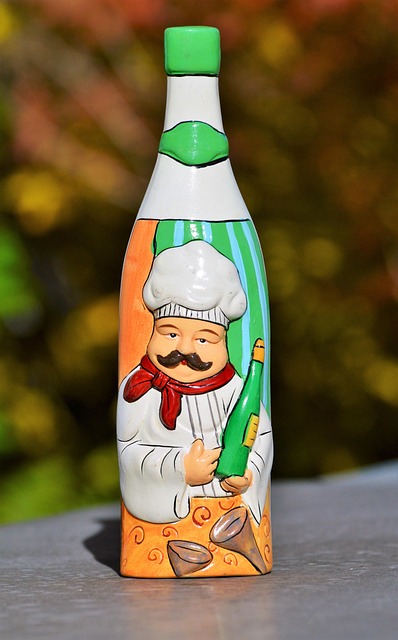Homeowners prefer vinegar over bleach for mold removal due to its natural anti-fungal properties, safety, and eco-friendliness. While vinegar is gentler and non-toxic, bleach effectively kills mold but poses health risks and surface damage. For safe, repeated applications, vinegar emerges as the superior choice, targeting mold spores and balancing pH levels. Wear protective gear, ventilate areas, and consider professional help for extensive infestations. Compare vinegar vs bleach for mold eradication based on safety and efficacy.
In today’s eco-conscious world, choosing biodegradable mold cleanup products is a smart and sustainable decision. This comprehensive guide explores the best natural alternatives, shedding light on their effectiveness in combating unsightly and hazardous mold growth. We delve into the age-old debate: vinegar vs. bleach, examining their pros and cons for a safe, efficient cleanup. Discover the advantages of natural removers and learn how to navigate commercial options versus DIY homemade solutions.
- Understanding Biodegradable Mold Cleanup Products
- The Debate: Vinegar vs Bleach for Effective Removal
- Benefits of Natural Mold Removers
- Product Comparison: Commercial vs Homemade Solutions
- Tips for Safe and Thorough Mold Cleanup
Understanding Biodegradable Mold Cleanup Products

When it comes to tackling mold, many homeowners reach for traditional cleaning agents like bleach, often unaware that there’s a safer, eco-friendly alternative available: biodegradable mold cleanup products. These innovative solutions are designed to effectively eliminate mold while minimizing environmental impact. Unlike harsh chemicals, biodegradable options break down naturally over time, reducing the risk of further contamination and ensuring a healthier living space.
In the debate between vinegar vs bleach for mold removal, vinegar stands out as the more sustainable choice. Not only is it a powerful natural disinfectant, but its gentle nature prevents damage to surfaces and doesn’t release toxic fumes. On the other hand, bleach can leave behind harmful residues and isn’t suitable for all types of molds or surfaces, making biodegradable alternatives a safer and more comprehensive solution for mold cleanup.
The Debate: Vinegar vs Bleach for Effective Removal

When it comes to tackling mold, the age-old debate rages on: vinegar vs. bleach? Both are common household items with powerful cleaning properties, but their effectiveness in mold removal differs significantly. Vinegar, a natural acid, is often praised for its anti-fungal properties and ability to cut through mold’s sticky surface, making it an eco-friendly choice. It’s particularly useful for hard surfaces like tiles and countertops, leaving no harsh residue.
On the other hand, bleach, a powerful disinfecting agent, has long been the go-to for killing mold spores and preventing their return. While it’s highly effective against many types of mold, it can be corrosive to certain surfaces and isn’t recommended for use on all materials due to its high acidity. The choice between vinegar and bleach depends on the specific needs of your cleanup project, surface type, and desired level of eco-friendliness.
Benefits of Natural Mold Removers

Many people turn to natural, biodegradable mold cleanup products due to their numerous benefits over traditional chemical-based solutions like bleach. One popular and effective choice is vinegar, a simple yet powerful cleaning agent. Vinegar is not only non-toxic and safe for both people and pets but also helps to prevent the growth of new mold by balancing pH levels in the affected area. It can be used undiluted or mixed with water to create a versatile cleaner that cuts through grease, grime, and even hard water stains.
In contrast, while bleach is effective at killing mold, it poses significant health risks if not used properly. Inhaling bleach fumes can irritate respiratory systems, and direct contact with skin or eyes may cause severe discomfort or damage. Moreover, bleach is harsh on surfaces, potentially damaging finishes and materials over time. Natural mold removers like vinegar offer a safer alternative that aligns with eco-friendly practices, making them a preferred choice for those prioritizing both health and the environment.
Product Comparison: Commercial vs Homemade Solutions

When it comes to mold cleanup, there’s a common debate between using commercial products and homemade solutions. One popular comparison revolves around vinegar vs bleach for mold. Commercial cleaners often contain harsh chemicals that can be effective but may also pose health risks if not used properly. On the other hand, vinegar is a natural, non-toxic option gaining popularity due to its antifungal properties. While bleach is effective against mold spores, it reacts with other common substances in your home, creating harmful gases.
Homemade solutions like vinegar and water mixtures are increasingly favored for their simplicity and safety. Vinegar’s acetic acid can break down the cell walls of mold, preventing its growth. In contrast, bleach breaks down organic matter but doesn’t directly target mold spores, making repeated applications necessary. For a safe, effective approach, many experts recommend natural alternatives like vinegar as a superior choice in the vinegar vs bleach for mold discussion.
Tips for Safe and Thorough Mold Cleanup

When tackling mold cleanup, prioritizing safety is paramount. Always wear protective gear, including gloves, a mask, and goggles, to minimize exposure to mold spores. Ventilate the area thoroughly by opening windows and doors to ensure adequate air circulation. If the mold infestation is extensive or you have health concerns, consider enlisting the help of professionals equipped with specialized equipment.
When it comes to eradicating mold, there are two common household ingredients that often spark debate: vinegar and bleach. Both have their merits. Vinegar, a natural acid, is effective in killing mold spores and breaking down organic matter. It’s also non-toxic and environmentally friendly. Bleach, on the other hand, is a powerful disinfectant but can be harsh and release toxic fumes when mixed with ammonia or other cleaners. For safe and thorough cleanup, consider using vinegar as a primary cleaner and bleach sparingly for hard-to-reach areas or stubborn stains, always ensuring proper ventilation.
